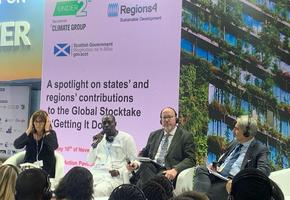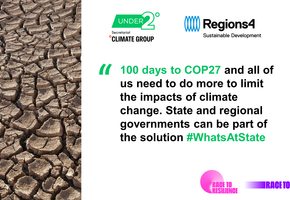In Dubai this December, world leaders will assemble at the COP once again to address the climate crisis against a backdrop of record heatwaves, droughts, and flooding. The devastating impacts of climate change are all around us but, with only six months to another crucial summit, what should the international community be prioritising as we try to address the most pressing and complicated issue of our era?
The world’s largest economies are responding to these challenges in different ways as they look to address inflation and drive economic growth while still capturing the benefits of a clean transition. President Biden, for example, launched the Inflation Reduction Act, closely followed by the EU’s Net Zero Industry Act, while China continues to invest in clean technology. But we’re still in danger of limping along with only six months to go.
Looking forward to COP28, here are six priorities that need urgent attention:
Phasing out fossil fuels
Energy security has taken central stage this past year, partly due to the impact of Russia’s invasion of Ukraine on energy supply. For many countries, particularly in Europe and the US, this has focused minds on accelerating renewable energy systems and infrastructure.
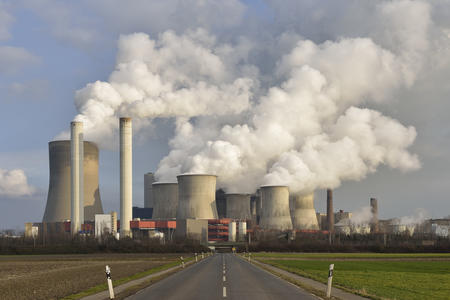
At the same time, we’re seeing an intensification of fossil fuel production in the short term as countries attempt to meet their energy needs. Even though investment in renewables equalled those in fossil fuels for the first time in 2022, fossil fuels are still heavily subsidised by governments. This approach is failing people, failing economies, and failing the environment. COP27 fell short of reaching a consensus on phasing out fossil fuels but it can’t be off the table this year. Continuing attachment to oil and gas will only delay the development of clean and sustainable energy.
However, we know the technology is there to decarbonise high-emission, high-demand sectors such as steel and concrete if investment is forthcoming. Decarbonising steel provides a unique opportunity to scale up renewable energy and clean hydrogen infrastructure for heavy industries. Wind turbines, solar panels, electric cars, sustainable buildings and low carbon ships are central to a zero-carbon economy. And they’re all made using steel. These intersections are critical – we must tackle the energy transition and the steel transition simultaneously.
Protecting global food systems
Food insecurity remains an urgent problem. Extreme weather events, conflict and Covid have exacerbated existing issues, with the 2023 Global Report on Food Crises finding that 258 million people are now impacted by crisis or acute food insecurity.
It’s welcome, in this context, that the COP28 presidency has a much-needed focus on food – which is critical for both people and climate. The food system is one of the main drivers of climate change, contributing a third of global greenhouse gas (GHG) emissions and consuming 30% of the world’s total energy demand, most of which is still very much fossil fuel-based. With ongoing food insecurity and reducing levels of productive land, it’s vital that leaders find a solution to ensuring equal access to healthy and nutritious food.
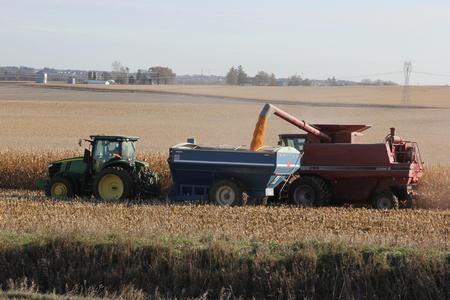
And this is not just about mitigating carbon emissions. Current methods of meat production are leading to increasing levels of methane too. While carbon emissions make up 76% of global emissions, methane, as a short-lived climate pollutant, can warm the atmosphere 80 times faster. However, the short life cycle of methane emissions provides a big opportunity to help limit global temperature rise right away if it’s properly addressed.
It’s increasingly vital that we cut emissions right across supply chains with well-timed interventions, for example through improving cold storage in food transport or investing in renewable heating options for processing food and drink. Less energy-intensive cold storage will not only cut emissions but will increase the lifespan of food, reducing food waste and helping ensure there’s more to go round.
Financing a safer, low carbon future
It’s clear that without adequate climate finance, it won’t be possible for the world to reach net zero emissions or adapt to a changing climate – particularly for countries in the Global South. At COP15, developed countries committed $1 billion per year by 2020 for developing countries but this target has never been met.
This is being recognised at national and regional level, as well as by multinational institutions such as the World Bank and regional banks, like the Asian Development Bank. These institutions must not just allocate funding for climate change mitigation and adaptation but also use financial mechanisms to direct that funding more effectively. Only last year, the Bridgetown Initiative outlined three steps global leaders should take to help Global South countries respond to climate change amid an ongoing global cost of living crisis.

But we can’t just focus on national governments. Our research on how subnational governments can raise and utilise climate finance identified opportunities to upscale action. While COP28 is a state party-focused process, more should be done to consider the role of subnational governments, as they are often the level of government closest to people and communities. For example, they can play a significant role in raising revenue, implementing green public procurement, and incentivising public/private finance at local level.
There’s a lot that can be learnt from existing initiatives. Our research identified creative ways in which subnational governments are supporting climate and development goals. For example, North Rhine-Westphalia’s roll out of ‘sustainability bonds’ worth €3.5 billion, to finance social and environmental projects that benefit local people. The ninth bond, issued last year, supported more than 70 eligible projects outlined in the state’s 2022 budget, including projects helping to undo the negative health and social impacts of Covid.
Connecting the climate and biodiversity crises
For years, climate change has been discussed in separate fora to biodiversity loss and has appeared to all intents and purposes as a separate issue. This is clearly a mistake, considering that climate change drives biodiversity loss and vice versa.

However, this stance has begun to shift. At the 2022 UN (United Nations) Biodiversity Conference in Montreal, more experts and politicians emphasised the links between these crises and, crucially, the common solutions that can support both.
It’s still early days, but the summit saw some positive breakthroughs that could have implications for COP28. Parties agreed, for instance, on clear targets to address overexploitation, pollution, fragmentation, and unsustainable agricultural practices and recognised the need to align financial flows with nature to avoid supporting environmental harm. Progress here will support Sustainable Development Goals and reduce emissions, while supporting climate change adaptation.
With President Lula of Brazil convening a summit for Amazon Rainforest nations in August, 2023 is the ideal time to find new ways of working together for the planet. COP28 provides a crucial opportunity to maintain momentum on the targets of COP15 while driving the climate agenda forward to 2030.
Recognising the needs of all people in the climate transition
As the impacts of climate change intensify, we need to ensure that those who have contributed least to the problem are not those that suffer the most.
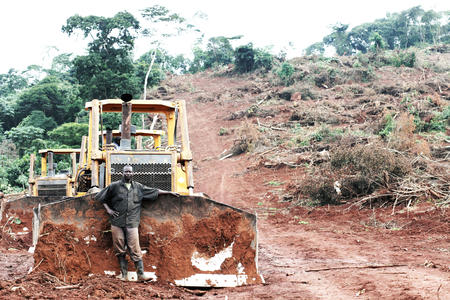
The Paris Agreement commits parties to reduce greenhouse gas emissions while considering “the imperatives of a just transition of the workforce and the creation of decent work and quality jobs.” These transitions are also an opportunity to address inequity and inequality, but the key question remains: how do we design and implement transitions that benefit both people and climate? Under2 Coalition members including California, Cross River State and Wales are just a few examples of best practice at regional level.
These states’ and regions’ responses provide an insight into what a just transition can mean in practice. COP28 is an important opportunity to learn how governments are tackling these challenges and what can be done to effectively integrate just transition considerations into mitigation and adaptation efforts.
Beyond this, many countries and communities are now turning their minds to what happens if the effects of climate change are irreversible. How can vulnerable communities be protected when the worst has already happened? As a result, a new loss and damage fund was introduced at COP27, partly through the intervention of Under2 Coalition co-chair, Scotland. However, the implementation of this fund is still unclear. Addressing how it operates is one of the vital questions to be answered at COP28.
Holding everyone accountable
Crucially, all climate action from all levels of government and business needs to be credible. We need to have proper processes to demonstrate progress: to highlight where innovative work is happening and where we’re falling short.
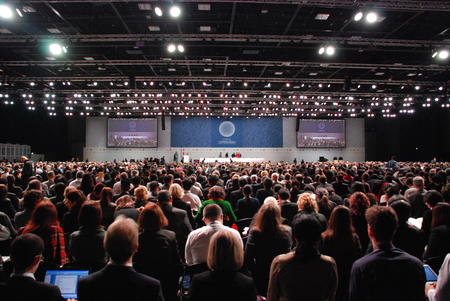
Climate Group is working with the UN’s High Level Expert Group (HLEG) and the COP28 presidency to find the best ways of holding governments and other actors to account for their climate promises. After all, pledges are one thing while actions are quite another. The first ever UN Global Stocktake (GST), which finishes at COP28, has been looking at whether countries have been making tangible progress on their Paris Agreement commitments eight years on. Their conclusion is widely expected to be ‘no’.
As people and communities continue to struggle with rising energy costs, food insecurity and extreme weather events, it’s not enough to talk about pledges, ambition, and progress further down the line. Concrete action is needed now. How will governments implement the changes we need to keep the world below 1.5 degrees of warming? What progress have they made so far? How can they pick up the pace as we edge ever closer to 2030?
With only six months to go to COP28, these six areas are critical to address. Moving from commitment to meaningful action is more essential than ever.

